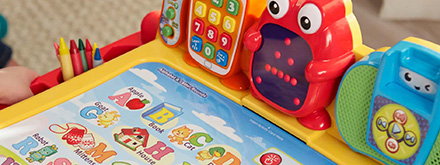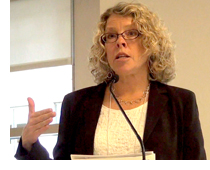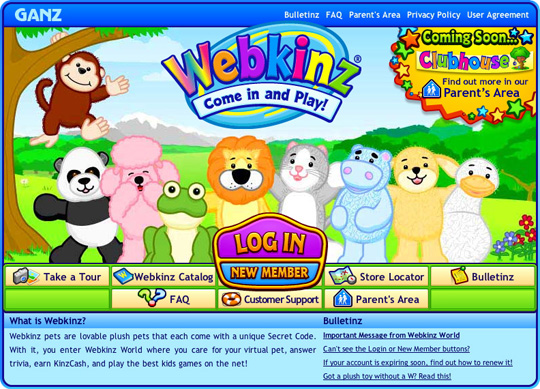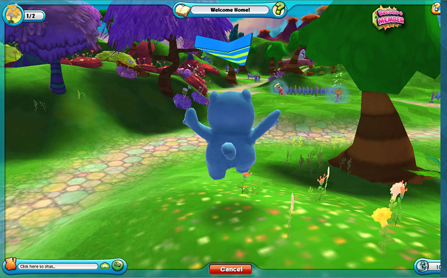

[The following is an extended version of a feature article I wrote for the online magazine Kidscreen, January 26, 2017. In this version you will find additional interview quotes and financial details of business deals not fully detailed in the original Kidscreen article.]

What a year 2016 was for kids digital businesses. From Age of Learning’s US$150-million funding injection, to LeapFrog jumping ship to VTech, there were plenty of opportunities—and dollars—to be had. But rising to the top were seven major moves spanning the app, toy, education and investment worlds, and their impact will only begin to materialize in the year ahead. This rings especially true when it comes to building platforms and brands, the growth of subscription pricing and the state of venture capital investments. Let’s take a closer look:

1. Age of Learning receives US$150-million venture investment
This was a major business announcement, not just for the kids space but also within the entire venture capital community. Age of Learning’s flagship digital product is ABCmouse, and over the last few years the company has consolidated its offering by allowing a single user account to be accessed across online, tablet or smartphone devices. (Consumers purchasing a single subscription can add up to three users, and schools have access to the product for free.)
As with many traditional subscription products sold to kids, keeping your user-acquisition costs low is important, but you also don’t want to curtail long-term sales growth. Ongoing subscription renewals are vital for growing business revenues, and the cost of renewals is a fraction of what it takes to acquire a customer for the first time. Revenues from subscriptions are the lifeblood of ABCmouse, so Common Sense Media‘s report that trying to cancel one is challenging at best, is not surprising.
Since the investment by Iconiq Capital, Age of Learning has been on a hiring spree in order to develop a deeper content base, push new older-skewing products and continue product expansion into emerging markets like China. While Age of Learning has not said so specifically, one also has to wonder about sales expansion opportunities in India, too.
One brand related lesson can be learned here from a past business mistake from LeapFrog, another company mentioned in this article. Historically, a company that starts off selling consumer products almost exclusively to young children will face a major challenge when trying to age up their product lines and related sales. This was a problem for LeapFrog over a decade ago when the company went after a new revenue stream by selling learning products to tweens. There were many challenges to LeapFrog in pursuing the tween marketplace but maybe the biggest was the perception of their brand by the audience they wished to sell to. Up until that point LeapFrog sold primarily preschool through first grade products. To a tween LeapFrog products were perceived as a “baby thing”, and who could blame them? Aging up a company’s product line is a major challenge without first creating a new brand that appeals to that new demographic. While this was a hard lesson for LeapFrog, could Age of Learning run into a similar problem as they try to age up their ABCmouse product? Granted, schools buying an educational product push the wares onto students, and students have almost no say about the learning materials they’re forced to use. Still the brand perception of a “baby thing” can jeopardize sales to older audiences.

2. VTech acquires LeapFrog for US$72 million
The sale of LeapFrog came as a shock to many fans of the beloved brand, though a potential acquisition had been in quiet discussions amid falling quarterly sales, profits and stock prices. According to Tom Kalinske, who was LeapFrog’s CEO between 1997 and 2006, and an active board member at the time of last year’s sale, it was difficult to see the company sold, though it provided the greatest return to investors.
In terms of financials, LeapFrog was at its revenue apex in 2005, bringing in more than US$650 million globally. Compare that to VTech’s electronic learning division, which was hauling in US$281 million at this time. However, by the 2016 acquisition, LeapFrog’s last trailing 12 months of financials show it brought in US$223 million, while VTech revenue had swelled to US$657 million globally, amounting to a swap of fortunes for the two companies.
When asked what the main challenges were for LeapFrog, Kalinske points to the changing nature of platforms that parents wish to buy for their children.
“The sale of LeapFrog to VTech reflects the dramatic change of parents originally wanting to buy hardware-related learning products, to a new desire to buy software-based ones. LeapFrog didn’t move fast enough to get their content onto other platforms, ” Kalinske says. “If you add up all the software apps and learning apps, as a market it’s not a bad picture. What was bad was all the custom tablets, like Nabi, Fuhu, and even LeapPads, specifically designed for kids. Moms decided they didn’t need them anymore because they could do the same functions with their phones or older hand-me-down tablets. In this regard, LeapFrog did not move quickly enough with this market change.”
Kalinske also adds a second mistake LeapFrog made was not making basic lower-priced learning toys as VTech was doing. As a result of not addressing this consumer interest, LeapFrog lost valuable market share to VTech as a result.
When asked about venture investments in the kids space, John Barbour, LeapFrog’s most recent CEO, asks, “How come over the last eight to 10 years there’s been an immense amount of investment in educational content for kids, but yet only a handful of companies have truly been successful in having a significant return on investment?” He says there maybe 100 companies have put money into this space, with a bulk of them ultimately failing.
Reflecting on more recent changes, Kalinske shares that raising capital is hard for any company, and while landing seed funding to jumpstart a business is not impossible, the process of moving past seed funding to a future investment is currently challenging. He adds, “Investors are looking for more traction and more revenue these days. The venture capital world and its judgment of startups in this space is even harder than it used to be. It’s a pretty tough place to be in right now. While it’s hard in the kids space, the story is not all doom and gloom, there are some successes out there still.”
Ironically, just after the acquisition, LeapFrog announced its new online learning service called LeapFrog Academy. While in development for some time before the acquisition, could this new subscription-based product be part of LeapFrog’s master plan to compete with ABCmouse? Barbour mentions that simply taking advantage of subscription pricing to sell more apps and generate more income will not work for everyone.
“Subscription pricing is the panacea everyone hopes will save business lives, but it doesn’t work that way. To be successful in the kids subscription space, you need to have a brand that people really trust, with an abundance of content. It should be more than what anyone would ever need as part of the value proposition, and you also need a strong customer-acquisition and management infrastructure, ” Barbour says. “ABCmouse has much of that, especially the strong customer-acquisition and management model. ABCmouse has succeeded here where the bulk of everyone else has failed because they are usually missing one or all of those three key elements.”

3. Spin Master acquires Toca Boca
Another striking announcement was the sale of children’s app world darling Toca Boca to Canadian toy company Spin Master. Rumors of the sale had been floating around for more than a year before the formal announcement, with a purchase price predicted to fetch as much as US$100 million. Speaking with Björn Jeffery, CEO and co-founder of Toca Boca, he confirms his company was in discussions with a number of buyers, though he points out the sale was handled by parentco Bonnier, and not Toca Boca.
A recent business filing by Spin Master states the acquisition price as being just under US$31 million, which is far from what speculators had been anticipating for a company with more than 150 million app downloads. Jeffery mentions Toca Boca had seen healthy revenue growth year over year since its launch in 2011, and had been a profitable company up until 2015. That was when Toca Boca started investing in its SVOD service, Toca TV, which launched last summer.
Now that Toca Boca is part of Spin Master, the level of business experience and support in this domain has been, according to Jeffery, “a very positive thing.” Where such an acquisition opportunity allows one to “draw strength and experience from another company.” Jeffery shares “it’s nice to have found a new home, Spin Master has a vision and an idea of where they hope to go with us, and that’s not the environment we came from working under our prior owner. That intent makes a huge difference from a strategic perspective.”
Jeffery sees how many kids app companies seem to be giving up on consumer sales and notes how some of these companies are shifting to education. This shift allows businesses to pursue larger B2B school sales rather than smaller, individual B2C sales. Jeffery believes this is most likely being driven by the difficulties to monetize in B2C. “It was not easy being a kids app developer in 2016, and it will not get any easier in 2017 either.”
When asked about what the 2017 kids app space will look like, Jeffery says companies are either “working small, ” or “going big, ” and there is no in between. Developers either choose to work with a handful or fewer number of people, making a small existence for the team. Or they go big, trying to raise venture investment dollars and create something really large. There are not many kids app companies that choose to be mid-sized. Jeffery describes this as, “the polarization of the industry, ” where one is not better than the other, it’s just there’s not a middle ground.
As for app subscriptions in the kids market Jeffery says “It’s still early to say how subscriptions will play out. It’s hard to tell if there’s a greater purchase demand for kids apps in the app stores with subscriptions than without it. It’s clear by the number of companies offering subscriptions, it’s busy, there are many more subscription offers now than before, though these are still very early days for subscription pricing.”

4.) Khan Academy acquires Duck Duck Moose
Most players in the children’s app world will point to Duck Duck Moose (DDM) as one of the industry’s earliest successes. Launched in 2008, three friends formed the company with a mission to engage young children using high-quality educational apps. By 2012, DDM was one of the first kids app companies to receive venture investment to the tune of US$7 million, with just 2.5 million app downloads at the time. Last year, DDM announced it had been acquired by video learning powerhouse Khan Academy. Just before the acquisition, DDM had reached 10 million paid app downloads.
The deal was unusual by nature. DDM was a for-profit company and its buyer a non-profit one, resulting in a combination that would not provide a significant return on investment. This combination was enabled by Omidyar Network, the philanthropic investment firm and first underwriter of a new early learning initiative at Khan Academy, that will be led by DDM. Omidyar provided an initial $3 million US grant to support two years of future DDM operations, and Khan Academy will continue raising funds to support this early learning initiative. Khan Academy works in a similar way where it seeks out grant investment to develop and support its vision of free learning materials for all. As part of the acquisition plan DDM, which previously sold its apps for a price, would now give them away for free.
Caroline Hu Flexer, CEO and founder of Duck Duck Moose, mentions her company had many acquisition conversations, and had for-profit offers that could have resulted in a more lucrative deal. However, the opportunity to make a difference, to make a lasting impact and to reach as many kids as possible might not have been the outcome with the other suitors.
In the few months following the acquisition, DDM has seen an additional 15 million app downloads without releasing a single new product. This brings its lifetime global app download count from 10 million to more than 25 million.
“Khan Academy has such reach and great distribution, which is why wanted to collaborate with them” says Flexer. “The impact we’re making at a global level is amazing. We’re now hearing from teachers all over the world about how this move has provided them with access to high-quality materials that they couldn’t get before. This is what we have wanted to do all along, which is to figure out how to make the biggest impact with kids, and especially those who wouldn’t have the means or resources to benefit from our apps.”
Flexer shares their expertise all along has been in app development, which her small team will continue to focus on. Being part of the non-profit Khan Academy now means DDM will be funded by philanthropic support and community donations, like all other Khan Academy initiatives. No longer will DDM need to rely on app store sales to sustain their company.
This acquisition also offers a great brand lesson. Khan Academy’s products are thought of collectively as for older users, whereas DDM’s products are a perfect fit for younger audiences. This acquisition helped broaden Khan’s reach into the preschool set, and did so with the combined expertise coming from two distinct brands, with one targeting older and one targeting younger.

5.) StoryToys, Amplify and Touch Press merge
Both StoryToys and Touch Press are known in the app world for creating great apps, with the former focusing on younger kids and the latter on older ones. Amplify Education was a digital K-12 division of Rupert Murdoch’s News Corp. News Corp sold the Amplify business to it’s management team in 2015, who were backed by Emerson Collective, an education foundation started by Laurene Powell Jobs, the wife of late Apple founder Steve Jobs.
In 2016 it was announced that the games business of Amplify would merge with StoryToys, along with the app portfolio and brand of Touch Press, under a new company Touch Press Inc. If you’ve followed along this far, here’s a somewhat confusing element to this whole deal – it has also been backed by an Emerson Collective Investment vehicle, Amplify Education Partners.
Barry O’Neill, CEO of StoryToys, is now CEO of Touch Press, which will be the parent company for the collective. (StoryToys and Amplify serve as imprints.)
“Subscription models, both platform and publisher-led, will become the predominant content business model by the end of 2018, ” O’Neill says. He also keeping content platforms agnostic as they continue to change over time.
As for venture investment O’Neill notes “There’s a well-documented Series A cliff that has compounded the perception that venture capital has dried up for kid tech companies. Easy access to consumer market via the app stores and rapid product development tools such as Unity have led to an explosion of mom and pop shops, as well as micro-startups, ” he says. “Many of these have been able to secure initial seed capital through funds and accelerators, which have also proliferated over the last few years. However, the availability of Series A has not kept up with the pace of seed fund investment, hence the perception that venture capital is harder to come by.”

6.) Zynga’s learning games accelerator Co.Lab closes
Co.Lab was a nonprofit initiative founded in 2013 by commercial gaming company Zynga and education investment company NewSchools Venture Fund. Co.Lab was an accelerator that invested mostly in learning game startups. During the time it was in operation, it had seen 28 different companies go through its program. (StoryToys was one of them.) Each company received some amount of investment dollars in exchange for a small amount of equity back to Co.Lab to help mentor those companies growth.
Last spring, Co.Lab executive director Esteban Sosnik announced in a blog post that Co.Lab would be closing its doors. This came as startling news to many in the kidtech and edtech worlds. In particular, it gave the impression of a contracting and unhealthy kids business.
However, as Sosnik describes it from the investor’s side of a deal, the perceived venture investment problem has less to do with venture companies pulling back and more to do with how seed funded companies are not scaling revenues large enough to appeal to venture capital funds. Sosnik states both the consumer and school markets are very complex, which can add a level of complexity for scaling a business. The problem also intensifies with companies that rely on producing a lot of content, as content is so expensive to develop.
While Sosnik is no longer part of Co.Lab or Zynga, he is now a partner at Reach Capital, a company still making investments in the edtech startup space. Sosnik says he’s seeing a lot of activity in the K-12 and college-level education space, and Reach is making investments with a US$53-million fund it started in 2015. What he and other partners at Reach are looking to do is back entrepreneurs that value impact and can make a difference, especially among lower-income and underserved communities. (Note the similar goal to investment foundation Emerson Collective mentioned above.)
Sosnik also sees potential in startups that target two consumer business areas in particular. The first being consumer purchased early childhood products, as parents spend a significant amount of money preparing young children for school readiness. The second is college readiness, with products that cater to SAT prep and college admissions needs. Esteban points out that these are the two largest consumer learning business sectors.
Sosnik is also focused on finding companies that have a consistent revenue stream throughout the year, possibly through consumer holiday sales combined with school sales over the summer, or through ongoing monetization from subscriptions sales. Strong revenue potential coming from one of these two revenue models is part of what Sosnik looks for when considering future investment deals for Reach.
When reflecting on platforms, Sosnik is quick to say “Everybody in technology wants to develop the next ‘go to’ platform.” Historically this hasn’t happened, though Sosnik points to early platform successes that have helped increase communication between schools and parents with companies like ClassDojo or FreshGrade. (Note, Reach Capital is an investor in both of these companies. Emerson Collective is also an investor in FreshGrade.)

7.) Apple announces subscription pricing for developers
Apple made the announcement in mid-2016 it would begin to expand subscription pricing options to all app developers, including companies that create apps for kids. Shortly after Apple’s announcement, Google made a similar subscription announcement for Android developers. Since these announcements, how has subscription pricing benefited app industry generally, and kids app sales specifically?
While Apple was responsive to requests for comment, no new information was offered in terms of subscription sales or market growth since its announcement. However, app market data and analytics provider App Annie offered a lot to think about. Here are some surprising nuggets of information regarding the size of the kids app market as well as the changes subscription pricing has brought:
According to the data tracker, the global iOS kids apps market was estimated to be worth more than US$200 million last year. Apps within the Family category on the Google Play store garnered upwards of US$130 million globally in the last trailing nine months or so. (Google Play didn’t roll out its Family category until June 2015, so the dollar amount is not apples to apples.)
This will come as a surprise to many, that global sales from kids apps is not such a big market to play in after all. This might best explain how everyone interviewed for this article said selling in the kids app space is hard. Especially when you compare the size of the kids iOS and Android app market (roughly more than $330 million globally) to the sales numbers in the toy space for just VTech and LeapFrog together (collectively $880 million just between the two companies). In terms of changes related to app subscription pricing App Annie stated they don’t have specific numbers for kids subscriptions, but they could share other broad trends they see with subscriptions across other categories.
“Subscriptions have become an increasingly important type of app purchase, currently accounting for roughly 15% of all app store revenue. They have impacted a broad range of categories, including music streaming (Spotify and Pandora Radio), video streaming (Netflix and HBO NOW) and dating (Tinder). Both Apple and Google made changes in June 2016 that we believe will propel subscriptions even further. Apple’s App Store and Google Play have increased the share of revenue that publishers receive for subscriptions and iOS has opened them up to all app categories, including games.”

The year ahead, and beyond
There you have it, seven big stories to learn from, with a number of key takeaways for the year ahead. However, there’s one more observation to share, one not often mentioned in the halls of industry conferences and in business case studies. In researching this article, many executives interviewed all expressed in one way or another the desire to make a difference. One comment shared in particular best captures that pursuit. It comes from Mike Wood, the founder of LeapFrog, where he served as its first CEO from 1994 to 2004.
After Wood left LeapFrog he founded another early learning company called Smarty Ants, which he sold in 2015. Today, in an elementary school just north of San Francisco, Wood spends a few hours a day, almost every day of the week, helping young kids in grades K-2 learn how to read. Wood reflected on starting his businesses and the volunteering he is doing now. He shared the following:
“When you run a company with many passionate and smart people reaching to do the best they can for kids, it’s hard not to be attached to a company and the benefit you can bring to kids. For years at LeapFrog, as well as in my next company Smarty Ants, I would tell people ‘we’re in the goosebumps business, ’ we have the opportunity to change the trajectory in many kids lives. I get to be in a very special place, I’ve been able to work alongside some smart, optimistic, cheerful kids, and I get to be there when they just start learning to read. There’s lots of goosebumps in being there when that happens. Now it’s much different in terms of gratification from running a company like LeapFrog versus working directly with a small group of kids, but you still get goosebumps either way. You get the same joy when you see kids moving forward either way. It’s emotionally powerful to be part of these things.”
Here’s wishing everyone a wonderful and successful year ahead, filled with many new ideas to grow your businesses. May your future hold plenty of goosebumps!

Scott Traylor is the founder of 360KID and a consultant to many children’s interactive businesses and products (none of which are referenced in this article, except for LeapFrog, with which Traylor worked from 2004 to 2009, Smarty Ants, and a few Co.Lab startups Scott advised but are not mentioned in this article). He’s also a former computer science teacher and currently lives in Silicon Valley, searching for the next big opportunity in the children’s industry. Scott can be reached at Scott@360KID.com.
Average Rating: 4.4 out of 5 based on 187 user reviews.








